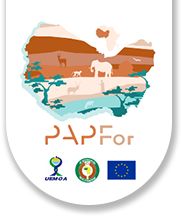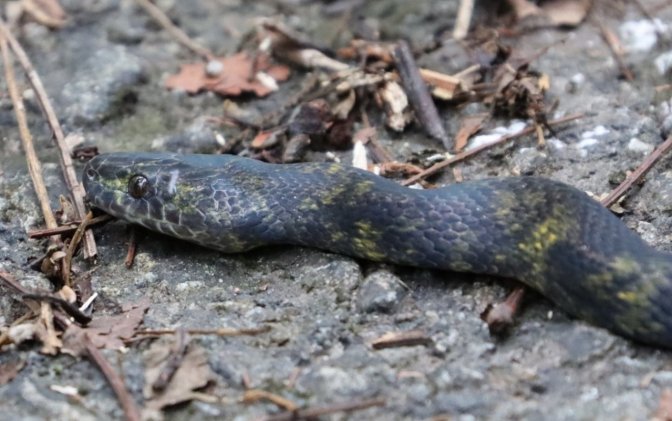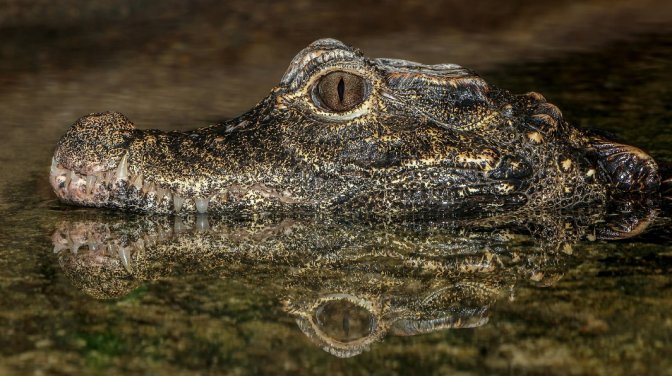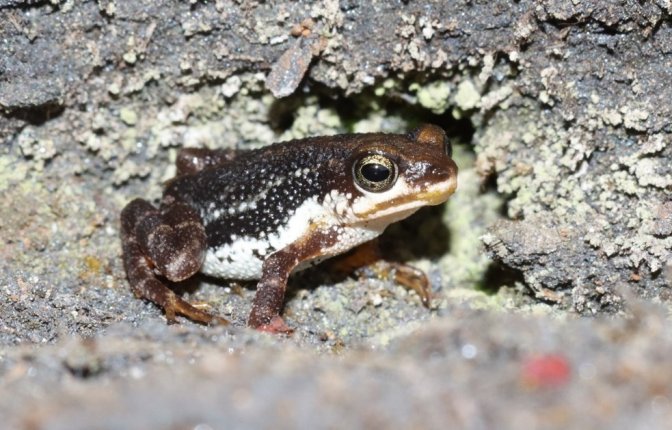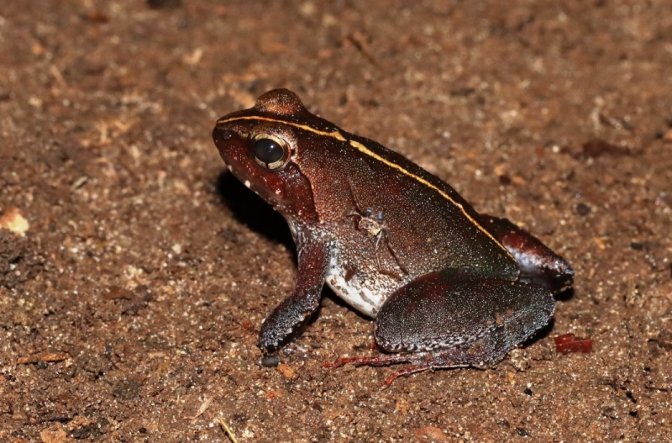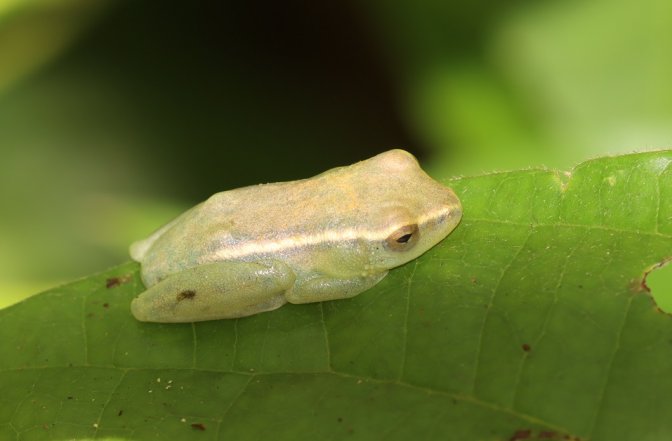Home / Guinean forests / Characteristics / The biodiversity / Animals / Reptiles and amphibians
Reptiles and amphibians
With more than 100 species of reptiles and over 200 species of amphibians, the so-called herpetofauna is particularly rich in the Guinean forests. And as these animals are slightly less mobile than mammals or birds, the rate of endemism is particularly high: in the course of the evolution of species, many have evolved in isolation, resulting in single species with a restricted distribution. This endemism is particularly high in the mountainous areas on the border between Nigeria and Cameroon and in adjacent areas. A particularly important area is found in the Cross River landscape: the forests between the Cross River and Mount Cameroon. The same is true of other groups of animals such as butterflies.
Further west, there are also reptiles and amphibians endemic to the forests of Upper Guinea and certain mountain ranges between Sierra Leone and Ghana.
Reptiles
The class of reptiles in the forests of West Africa is represented by various groups, including turtles, crocodiles, geckos, agamas, chameleons, skinks and lizards, monitor lizards and snakes. Little is known about these groups, and new species (mainly snakes, agamas and lizards) continue to be discovered almost every year. For example, in April 2021, during a mission funded by PAPFor in the East Nimba Nature Reserve (Liberia), an unidentified snake was observed. Several experts agree that this is probably a species new to science, close to Boaedon olivaceus, the Olive House Snake, but this can only be confirmed if a specimen is captured and studied in more detail.
A recent study has determined that the forest cobra living in West Africa is a species in its own right, distinct from its congeners in Central Africa and the Sahelian zones.
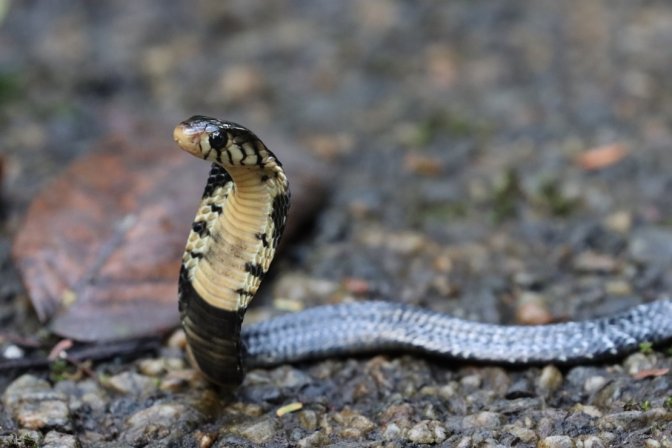
Among the crocodiles, the dwarf crocodile (Osteolaemus tetraspis) should be noted. This species is found in Upper and Lower Guinea and was sought after until the mid-1980s by certain luxury clothing and leather goods brands. The species is considered vulnerable by the IUCN.
While marine turtles are fairly well known, the various terrestrial turtles of the West African forests are less well known. The Pelomedusidae family includes a number of species that prefer waterways, such as the West African black turtle (Pelusios niger) and the African forest turtle (Pelusios gabonensis).
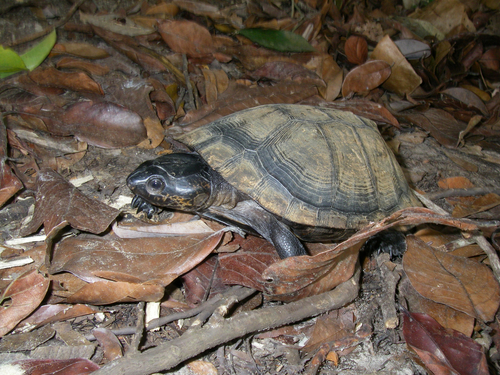
Other turtles, belonging to the Trionychidae family, also live in humid forest areas, such as the Aubry’s flapshell turtle (Cycloderma aubryi) and the African (or Nile) softshell turtle (Trionyx triungus), but are characterised by their soft shells. A final family, the Testudinidae, includes the hard-shelled Kinixys, which lives in undergrowth, mainly in search of mushrooms.
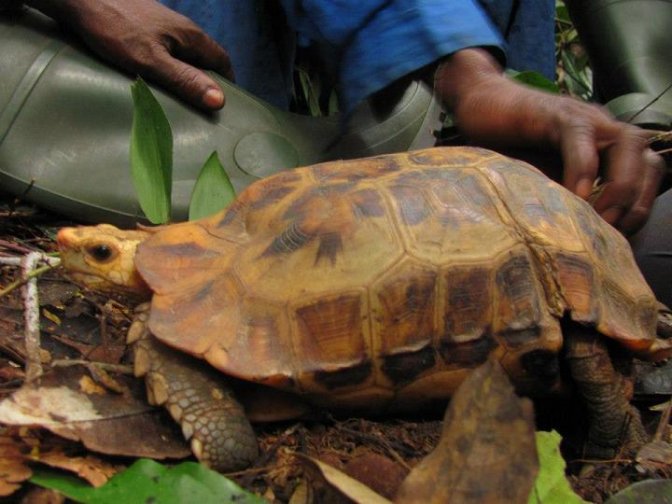
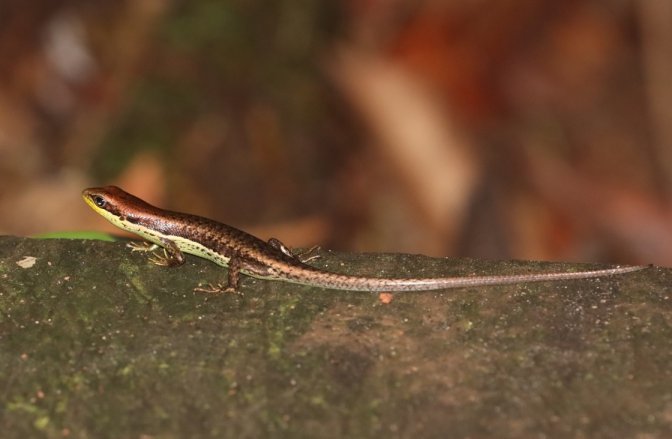
Amphibians
There are no salamanders or newts in sub-Saharan Africa. Amphibians are therefore mainly represented by frogs and toads (known as Anurans), but also by a very special group of amphibians, the caecilians (also known as Gymnophiona), which have no legs and look a bit like snakes or large earthworms. There are fewer than 10 species of caecilian in the Guinean forest, mainly in south-west Cameroon, but there are also three species in Upper Guinea.
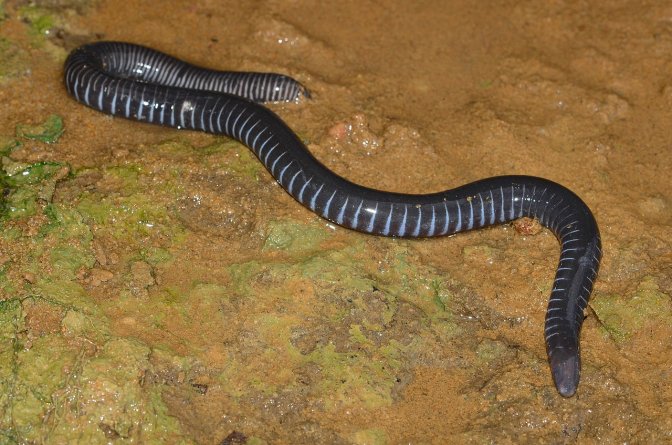
Of all the toads in the region, the strangest and most endangered is undoubtedly the Mount Nimba toad (Nimbaphrynoides occidentalis). This tiny toad (just 2 to 3 cm) does not lay eggs, but gives birth to fully formed young like the adults. It is found only in the high grassy meadows of Mount Nimba, which is shared by Guinea, Côte d’Ivoire and Liberia. Because of this very restricted distribution and the recurring threats to its habitat (bush fires in particular), this species is critically endangered. The entire world population of this toad is found in two protected areas: the Mount Nimba Strict Nature Reserve in Guinea and the East Nimba Nature Reserve in Liberia, both part of the Mount Nimba Landscape, supported by PAPFor.
Many species of toads and frogs have extremely limited distributions, sometimes covering only a few hundred hectares, particularly in the mountain ranges of Cameroon. It is hardly surprising, therefore, that many are threatened with extinction, and protecting their habitats is often vital to preserving these highly sensitive species. Threats include climate change, bush fires, deforestation and the introduction of invasive species, as well as various diseases that can decimate entire populations.
